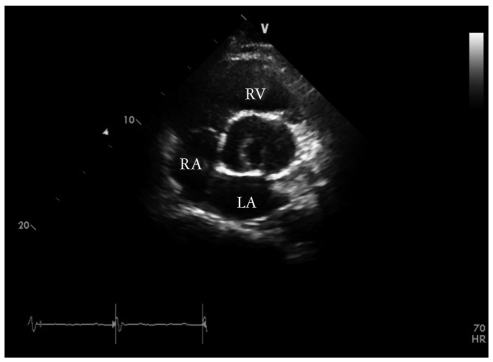1. Novaro GM, Mishra M, Griffin BP. Incidence and echocardiographic features of congenital unicuspid aortic valve in an adult population. J Heart Valve Dis. 2003; 12:674–678. PMID:
14658804.
2. Sniecinski RM, Shanewise JS, Glas KE. Transesophageal echocardiography of a unicuspid aortic valve. Anesth Analg. 2009; 108:788–789. PMID:
19224784.
3. Edwards JE. Pathologic aspects of cardiac valvular insufficiencies. AMA Arch Surg. 1958; 77:634–649. PMID:
13582422.
4. Roberts WC, Ko JM. Frequency by decades of unicuspid, bicuspid, and tricuspid aortic valves in adults having isolated aortic valve replacement for aortic stenosis, with or without associated aortic regurgitation. Circulation. 2005; 111:920–925. PMID:
15710758.
5. Anderson RH. Understanding the structure of the unicuspid and unicommissural aortic valve. J Heart Valve Dis. 2003; 12:670–673. PMID:
14658803.
6. Moller JH, Nakib A, Eliot RS, Edwards JE. Symptomatic congenital aortic stenosis in the first year of life. J Pediatr. 1966; 69:728–734. PMID:
5928004.
7. Gibbs WN, Hamman BL, Roberts WC, Schussler JM. Diagnosis of congenital unicuspid aortic valve by 64-slice cardiac computed tomography. Proc (Bayl Univ Med Cent). 2008; 21:139. PMID:
18382752.
8. Debl K, Djavidani B, Buchner S, Poschenrieder F, Heinicke N, Schmid C, Kobuch R, Feuerbach S, Riegger G, Luchner A. Unicuspid aortic valve disease: a magnetic resonance imaging study. Rofo. 2008; 180:983–987. PMID:
18814102.
9. Chu JW, Picard MH, Agnihotri AK, Fitzsimons MG. Diagnosis of congenital unicuspid aortic valve in adult population: the value and limitation of transesophageal echocardiography. Echocardiography. 2010; 27:1107–1112. PMID:
20553323.
10. Dursun M, Yilmaz S, Sayin OA, Ugurlucan M, Ucar A, Yekeler E, Tunaci A. Combination of unicuspid aortic valve, aortic coarctation, and aberrant right subclavian artery in a child: MR imaging and CTA findings. Cardiovasc Intervent Radiol. 2007; 30:547–549. PMID:
17278040.
11. Mookadam F, Thota VR, Garcia-Lopez AM, Emani UR, Alharthi MS, Zamorano J, Khandheria BK. Unicuspid aortic valve in adults: a systematic review. J Heart Valve Dis. 2010; 19:79–85. PMID:
20329493.
12. Agnihotri AK, Desai SC, Lai YQ, Fitzsimons MG, Hilgenberg AD, Vlahakes GJ. Two distinct clinical presentations in adult unicuspid aortic valve. J Thorac Cardiovasc Surg. 2006; 131:1169–1170. PMID:
16678607.
13. Butany J, Vaideeswar P, Dixit V, Lad V, Vegas A, David TE. Ascending aortic aneurysms in unicommissural aortic valve disease. Cardiovasc Pathol. 2009; 18:11–18. PMID:
18402825.
14. Bonow RO, Carabello BA, Chatterjee K, de Leon AC Jr, Faxon DP, Freed MD, Gaasch WH, Lytle BW, Nishimura RA, O'Gara PT, O'Rourke RA, Otto CM, Shah PM, Shanewise JS. American College of Cardiology/American Heart Association Task Force on Practice Guidelines. 2008 focused update incorporated into the ACC/AHA 2006 guidelines for the management of patients with valvular heart disease: a report of the American College of Cardiology/American Heart Association Task Force on Practice Guidelines (Writing Committee to revise the 1998 guidelines for the management of patients with valvular heart disease). Endorsed by the Society of Cardiovascular Anesthesiologists, Society for Cardiovascular Angiography and Interventions, and Society of Thoracic Surgeons. J Am Coll Cardiol. 2008; 52:e1–e142. PMID:
18848134.






 PDF
PDF ePub
ePub Citation
Citation Print
Print




 XML Download
XML Download